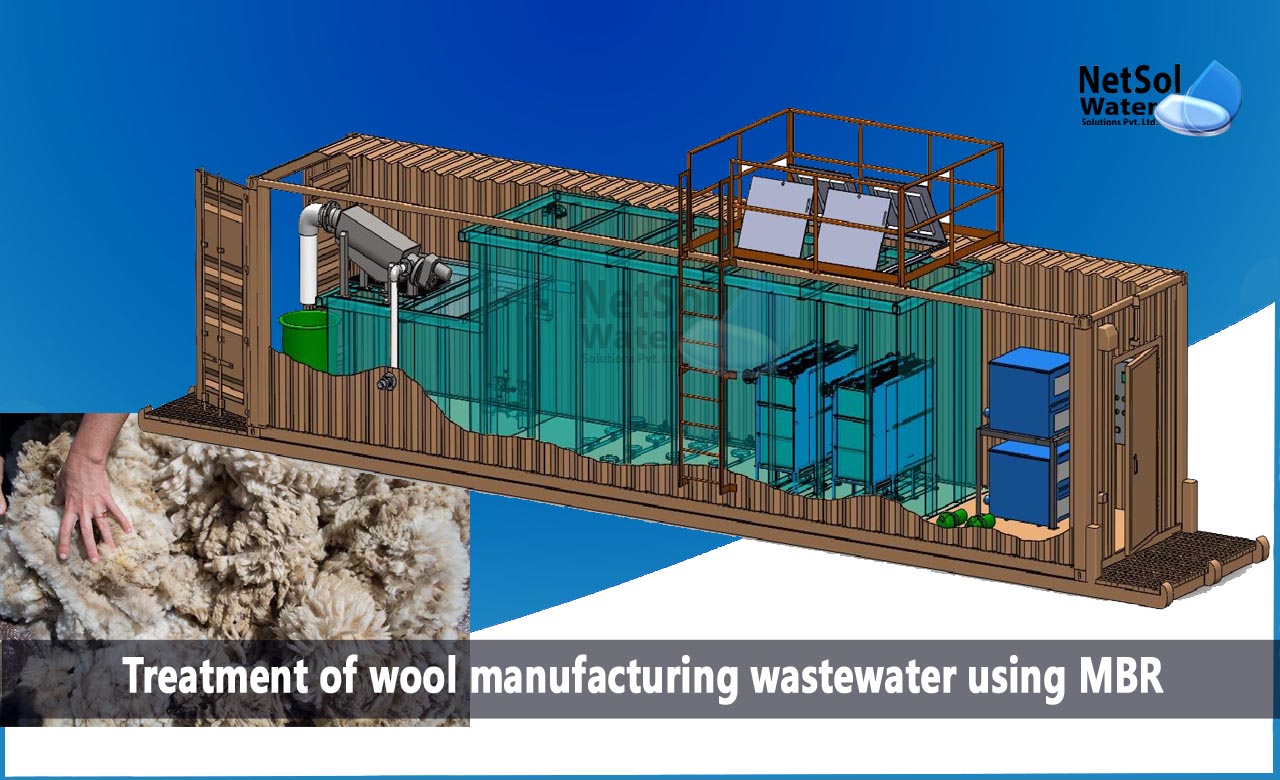How to treat wool manufacturing wastewater using MBR?
The procedure of obtaining wool is crucial in the production of woollen textiles. The wastewater produced by the souring of wool comprises a significant amount of difficult-to-degrade, suspended and soluble organic contaminants, mostly in the form of silt, lanolin, sheep manure, detergent, and sheep secretions. Among these, lanolin is primarily emulsified and occurs as O/W (oil-in-water), which makes up the majority of BOD and COD in wastewater.
Refractory organic wastewater, which includes wastewater from wool production, has a high concentration of organic matter and a high concentration of suspended matter. Let's examine the treatment of wool manufacturing wastewater using MBR.
· Sedimentation tanks
The wastewater from wool scouring passes through the grill, to remove large suspended matter, like wool and sheep dung in the wastewater, before entering the grit tank to remove inorganic salt silt, through sedimentation.
The wastewater flows into the adjusting tank after being treated, where the pH value is controlled by adjusting it, and the water quality of the wastewater is stabilised, preventing blockages of the water pumps and pipes in the wastewater station.
· The air flotation method
Submersible pumps should be used to transfer wastewater from the adjusting tank used for wool scouring, into the first-stage air flotation apparatus. The wastewater is thoroughly combined with the coagulant and coagulant assistance, before entering the air flotation apparatus for separation by air flotation.
The secondary air flotation apparatus receives the supernatant. The remaining scum from the secondary air flotation is discharged into the sludge tank, while the effluent from the secondary air flotation is pumped into the hydrolysis acidification tank. Most suspended solids and more than 80% of COD can be removed by the two-pole air flotation device, which significantly lessens the workload of subsequent biological treatment, during the hydrolysis and acidification process.
The hard-to-degrade organics and some sulphonic acid groups in the sourcing wastewater can be broken down, replaced, or cracked (degraded) by it, lowering the COD value and enhancing biodegradability.
· Acidification tank for hydrolysis
The hydrolysis acidification tank has semi-soft biological filler fitted, and the bottom of the tank has a water distributor. In a hydrolysis acidification tank, the scouring wastewater is hydrolysed and acidified, after precipitation and water quality adjustment.
This breaks down organic pollutants like large molecular weight proteins into smaller molecular weight materials, for subsequent aerobic biochemical treatment. In order to properly eliminate the ammonia nitrogen in the water, the mixed liquid after aerobic treatment is returned, to the hydrolysis and acidification tank.
· MBR Tank (Membrane Bioreactor)
MBR replaces the secondary settling tank in the activated sludge method for solid-liquid separation treatment, by using membrane separation technology. After hydrolysis and acidification, the wastewater is filtered by MBR to further lower the level of pollutants.
MBR can effectively remove pathogenic microorganisms, ensure stable effluent water quality, and lower filtration costs in addition to performing solid-liquid separation efficiently.
Conclusion
The most popular technique for wastewater treatment right now is MBR. It has a small footprint, stable effluent quality, good nitrification and denitrification effects, high nitrogen removal efficiency, and high solid-liquid separation efficiency. As a result, the MBR process is applied broadly in a growing number of fields.
The MBR from Netsol Water is constructed from modified hollow fibre membranes, and has a polyester support net embedded within it to increase compression resistance. Following the MBR tank's treatment of the wastewater from wool scouring, the effluent can either be discharged directly or after treatment, in accordance with wastewater discharge standards, or it can be reused depending on its actual situation through a series of water treatment processes, including microfiltration-ultrafiltration-nanofiltration-reverse Osmosis.
Choose the best providers of wastewater treatment plants in India!
At Netsol Water, we are committed to providing high-performing water and wastewater treatment systems including membrane bioreactors, to assist commercial and industrial enterprises with their treatment requirements. We have earned a reputation for providing top-notch service and customisations, which help our clients lower operating expenses and increase the life-span of their equipment.
The purchase of these systems includes the installation, the manufacturer's warranty, as well as a 24-hour customer service. You can reach us via phone at +91 9650608473 or drop a mail at enquiry@netsolwater.com for additional information



